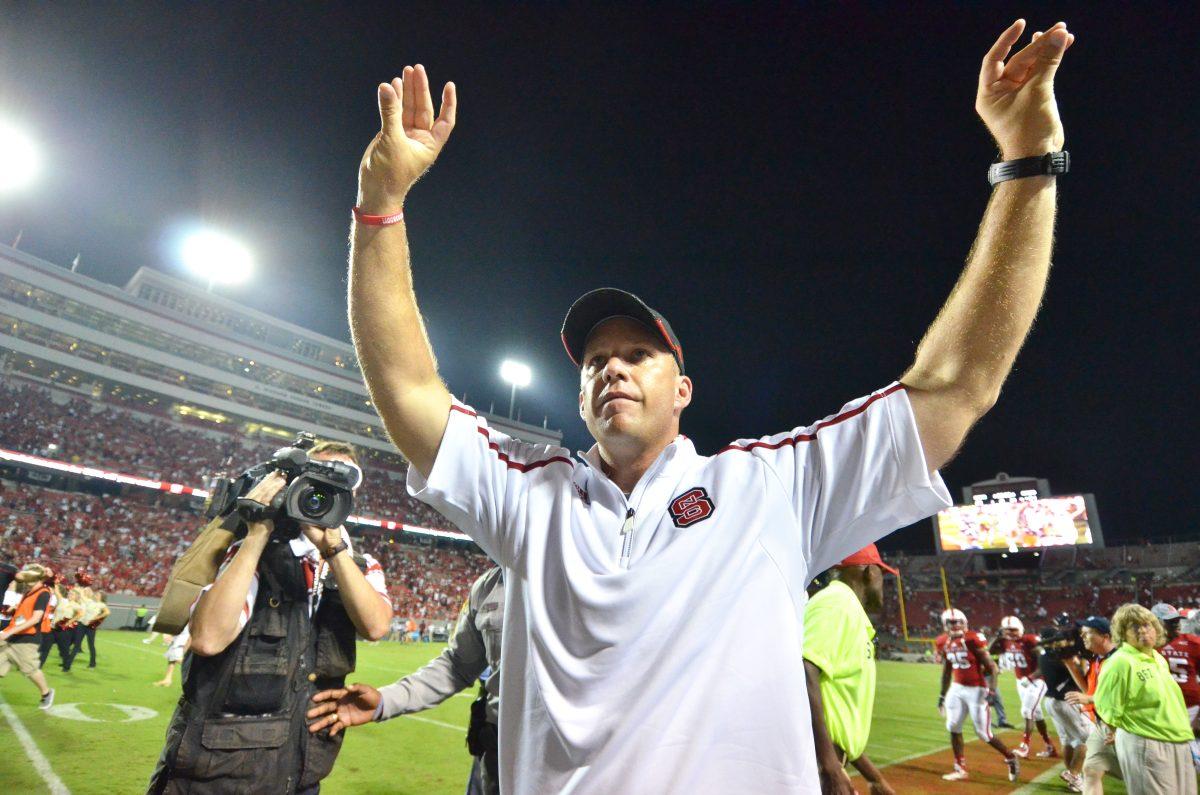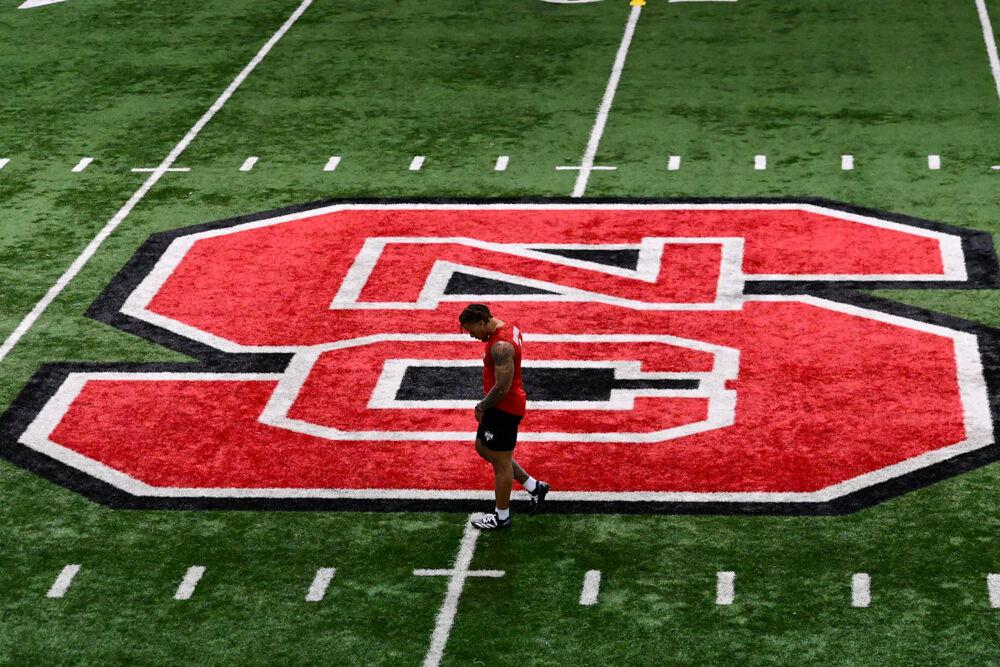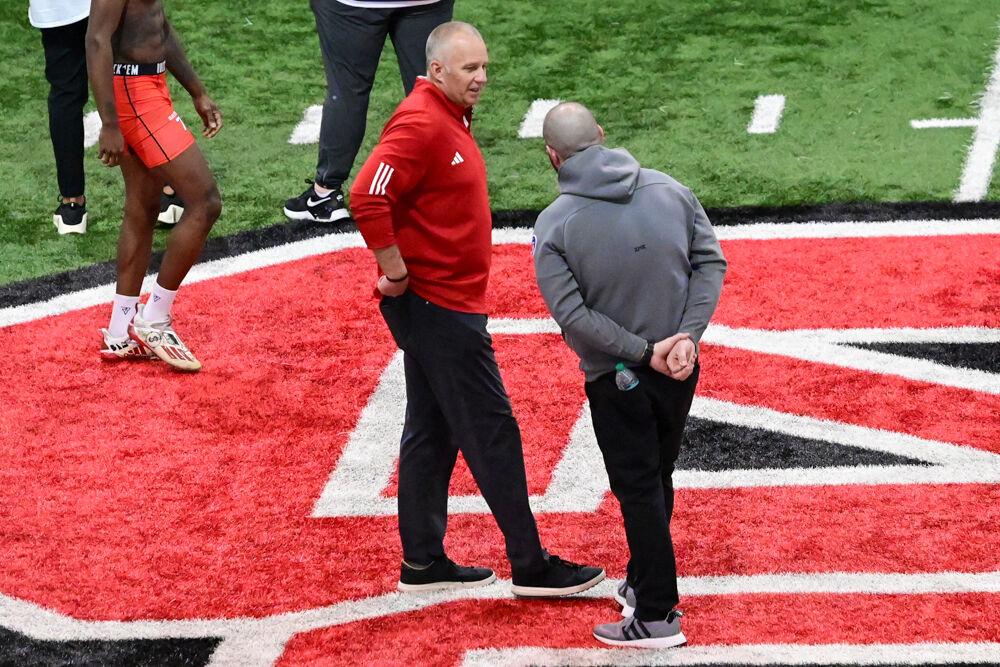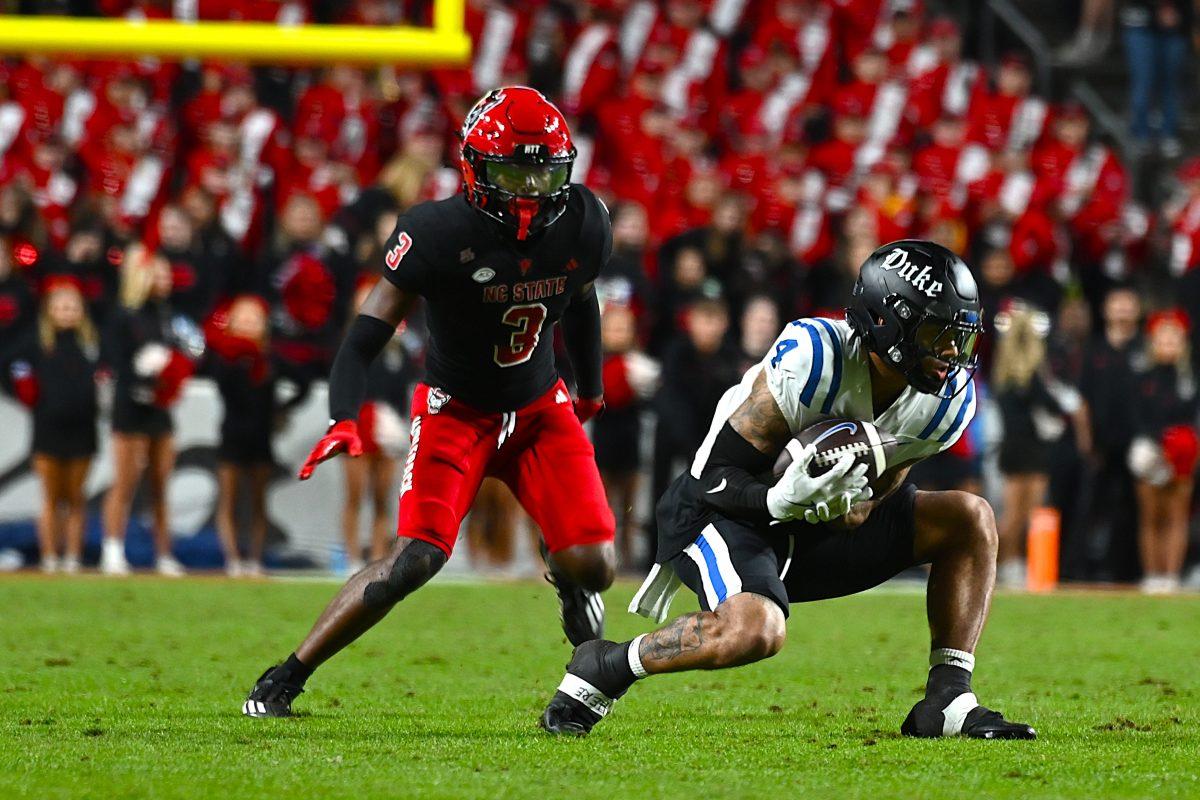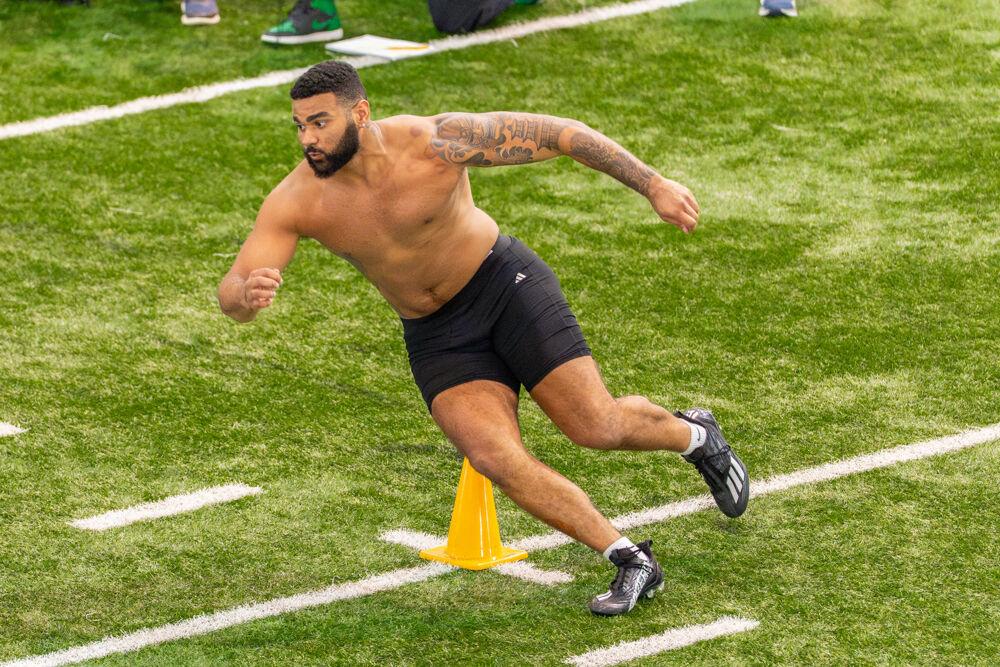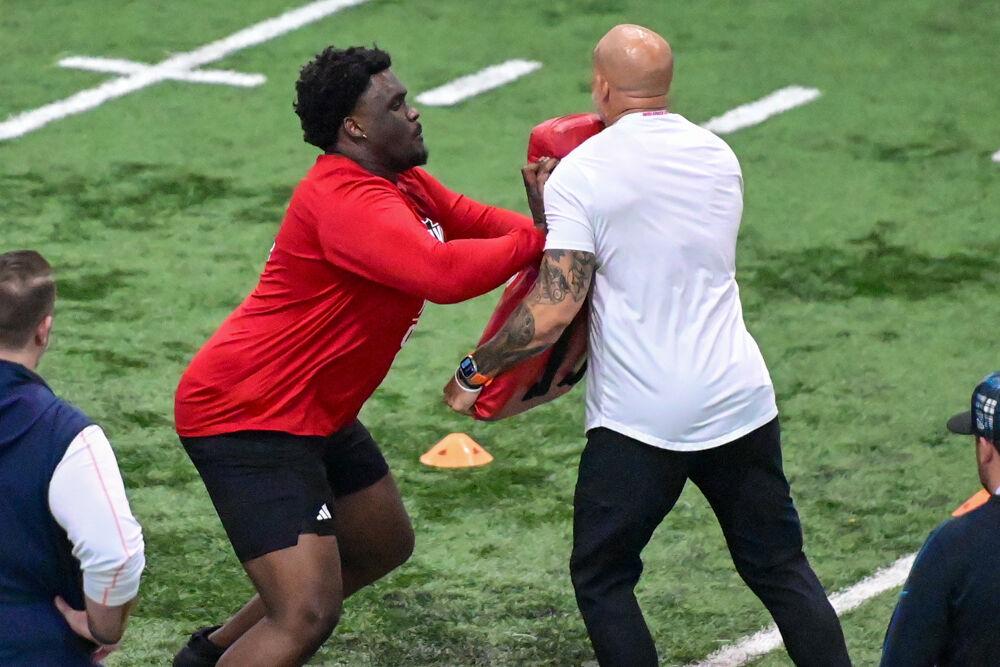National Signing Day finally came Wednesday, and regardless of which recruiting service is considered most trustworthy, the consensus was unanimous: N.C. State acquitted itself well in the recruiting battle of 2014.
Head coach Dave Doeren and his staff hosted a press conference and signing party inside Vaughn Towers at Carter-Finley Stadium Wednesday afternoon. Doeren itemized the signings in detail while videos played in a process that resembled a professor’s lecture.
He had plenty to talk about, as the newest members of the Wolfpack—many of whom are from within the state of North Carolina—bring with them a bevy of talent that will be familiar to the casual football observer.
A key to this class was the Wolfpack’s in-state success, which Doeren said would be his primary focus. Not only did Doeren, in his second year in Raleigh, ensure N.C. State secured talent within North Carolina’s borders, but he also locked up what could be considered recruiting steals from rivals.
The Wolfpack more than held its own in North Carolina’s recruiting hotbeds of Winston-Salem, Charlotte, Durham and Greenville—where four-star recruit Kentavius Street could have essentially walked to East Carolina, but instead chose to attend school in Raleigh.
Doeren’s tactics present an interesting contrast from the recruiting methods of State’s former head coach Tom O’Brien, who, for the most part, yielded the better high school players in North Carolina to other schools—both within the ACC and nationally—in an attempt to sign only the ‘right’ players.
It is a fallacy to completely write off O’Brien’s method, as it brought some wonderful student-athletes to N.C. State. Former players like J.R. Sweezy and Nate Irving, both of whom participated in Super Bowl XLVIII, along with NFL impact players Earl Wolff and Audie Cole were secured under O’Brien’s method.
Of course, O’Brien brought in Tampa Bay quarterback Mike Glennon and famously allowed another current NFL quarterback to transfer so Glennon could start.
What O’Brien did not do was bring in the needed depth to compensate when injuries inevitably occurred, and N.C. State had a ton of them in his six years in Raleigh—particularly in his first three years. O’Brien’s best season, in 2010, was also the only one in which his team did not lose many significant games due to injury.
But when it came to the on-the-field performance, O’Brien’s teams always seemed stuck in the mud, walking a tightrope between being mediocre and being championship contenders. The hope for N.C. State, which suffered mightily in 2013 by ending the campaign with eight straight losses, is it required a brief down period to get the wheels back on the road.
Doeren now will begin the process of getting N.C. State above the seven to eight win threshold that, prior to last season, seemed to be an annual occurrence and was a source of consternation for the Wolfpack faithful who aspire for league titles and major bowl berths.
For the second-year coach, who eschewed a trip to the Orange Bowl with Northern Illinois after the 2012 season so he could potentially go to the exact same bowl one day with N.C. State, there is no longer a question of “if” he has the wherewithal to bring in talent. A top-25 recruiting class after a three-win season answers that question.
Doeren now has the burden of proof as to whether or not he can lead the Wolfpack to the next level and beyond. After all, that is what he came to N.C. State to do.


